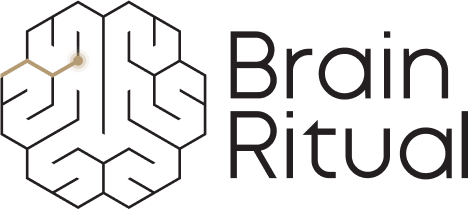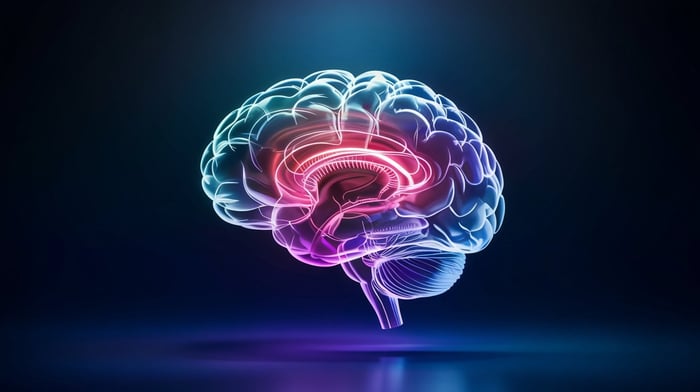Table of Contents
At a Glance
|
Neck pain might not be the first thing that comes to mind when you think of migraine, but it’s a lot more common than you may first realize. Many with migraine experience neck discomfort as part of their symptoms, whether before the headache starts, during the attack itself, or even afterward.
Whether it feels like stiffness around your shoulders or a dull ache at the base of your skull, recognizing when and how neck pain shows up in your migraine cycle can make it easier to manage and respond effectively when it happens.
Since it often overlaps with muscle tension or stress, neck pain is easy to overlook or mistake for something unrelated. You might wonder whether it’s a cause, a symptom, or just a coincidence.
In this guide, we’ll explore how migraines and neck pain are connected, why they tend to show up together, and what you can do to feel more in control. Whether your neck hurts before the headache starts or stays sore afterward, understanding the pattern can make a big difference in how you care for yourself when a migraine starts to build.
Is Neck Pain a Symptom of Migraine?
Yes, neck pain can often be a symptom of migraine, and it’s much more common than many people realize, especially if you’ve always thought of migraines as just a headache. In fact, studies suggest that up to 80% of people with migraine experience some form of neck pain during an attack.
If you tend to notice stiffness in the neck before the headache begins, you might be in the prodrome phase. This is the subtle warning window that can start hours or even days before the migraine occurs. For others, the pain only sets in during the main attack or lingers afterward as part of the recovery phase.
The pain is usually dull, stiff, or achy, rather than a sharp or stabbing feeling. It might affect one or both sides of the neck and often blends in with other migraine symptoms like fatigue, head pressure, or sensitivity to light and sound.
Because of this overlap, it’s easy to think that neck pain is a separate issue, such as a muscle strain or tension headache, but in reality, it’s part of the broader migraine picture.

Why Does My Neck Hurt When I Have a Migraine?
There are a few possible reasons why migraine and neck pain often go hand in hand, and these can vary from person to person.
Some people wonder, can migraines cause neck pain, or is it something else entirely? You might notice muscle tension building in your neck and shoulders in the hours or days before a migraine begins. This kind of tension can come from stress, poor posture, long hours at a desk, or even the way you sleep. As your body shifts into the prodrome phase, the muscles around the base of your skull may begin to feel tight or sore.
When neck pain is part of a migraine, it may be connected to how pain signals from the head and neck are processed together. A region called the trigeminocervical complex plays a central role in this process. It’s where nerves from the upper neck and the head converge, which may explain why tension in your neck can show up as head pain, or vice versa. This kind of referred pain is fairly common with migraines.
Inflammation and heightened sensitivity in the central nervous system may also play a role in migraine-related neck pain. During an attack, the brain becomes more reactive to normal everyday stimuli such as light, sound, movement, or even touch. This increased sensitivity may make your neck feel more sore, stiff, or achy than usual if there hasn’t been any physical strain.
Neck pain may show up before, during, or after a migraine for different reasons, but it’s rarely random. Whether it’s muscle tension, nerve overlap, increased sensitivity in the brain, or poor posture during long periods of rest or screen time, paying attention to the timing and pattern of your symptoms can help you understand how neck pain fits into your migraine experience.
Can Neck Pain Cause Migraine or Make It Worse?
Have you ever felt a migraine creeping in after a day of neck tension or poor posture? You’re probably not imagining it. You might even be wondering, can neck pain cause migraine headaches? For many people, discomfort in the neck may act as a trigger or make an attack more likely.
This may be because tight muscles, especially around the base of the skull, can irritate the nerves that feed into the brain’s pain pathways. When that happens, the brain can become more sensitive to pain signals, which may raise the likelihood of a migraine developing.
Tight muscles can also impair blood and hence nutrient and oxygen supply to the brain, which can make matters worse by reducing the available energy for the brain. Energy deficiency is a known migraine trigger.
The connection between neck pain and migraine isn’t always straightforward. Sometimes, neck pain comes first and helps set the stage for a migraine. In other cases, it may simply make an ongoing migraine feel even worse.
If you often notice neck pain before your migraine starts, paying attention to when it happens and how it relates to your other symptoms may help you figure out whether it’s acting as a trigger, an early symptom, or both.
How to Tell If Neck Pain Is Migraine-Related
It’s not always easy to tell whether neck pain is part of your migraine or if it’s a separate issue. Fortunately, there are a few clues that can help you figure out what’s really going on.
Migraine-related neck pain often feels like a steady ache or tightness, rather than a sudden, sharp pain. It usually appears on the same side as your migraine and may build gradually instead of coming on all at once. You might feel it in the base of your skull, your upper neck, or even along the sides of your shoulders.
Timing is another helpful clue. If your neck pain tends to show up before, during, or after a migraine, there’s a good chance the two are connected. It might be part of your prodrome, a symptom that flares up during the attack, or something that lingers during recovery.
On the other hand, neck pain that starts after a specific movement, an injury, or an awkward sleeping position may be more mechanical in nature. If it gets worse with movement, feels sharp or pinched, or doesn’t follow your usual migraine pattern, it’s more likely to have a different cause.
Keeping a symptom diary can help you notice patterns over time. Whether it's tension before an attack or soreness that sticks around afterward, tracking when your neck pain happens can make it easier to spot whether it's part of your migraine cycle.
What Can Help with Migraine-Related Neck Pain?
If neck pain is part of your migraine cycle, finding gentle ways to manage it can make a noticeable difference. While the right approach is different for everyone, there are a few simple strategies that many people find helpful.
Applying warmth or cold to your neck may help ease muscle tension or dull aches. A warm compress can loosen tight areas, while a cold pack may reduce sensitivity if your neck feels inflamed or tender.
Gentle stretching or neck rolls may also help, especially if your neck tends to feel tight before or after a migraine. Try slow movements like tilting your head from side to side or rolling your shoulders backward. Just be careful not to force anything, the goal is to relieve tension, not add to it.

Improving your posture can go a long way in reducing strain on your neck throughout the day. Small adjustments like raising your screen to eye level or adding a cushion to support your lower back can make a big difference, especially if you need to spend long hours sitting.
Relaxation techniques, such as breathing exercises, meditation, or light yoga, may help calm your nervous system by lowering stress signals and muscle tension. This can support a sense of ease in the body and help release built-up tightness in the neck and shoulders.
If you’ve started to notice a link between your neck pain and migraine, keeping a simple symptom log can be useful. Writing down when your pain starts and what happened beforehand, such as a missed meal or stressful day, can help you make sense of your migraine pattern.
If you're focusing on lifestyle changes like posture, stretching, or relaxation to reduce neck tension and manage your migraine cycle, then nutritional support may add another layer of help, especially when neck tension is compromising nutrient supply to the brain. Brain Ritual® is a medical food developed by an Oxford-trained neuroscientist for the dietary management of migraine.
It includes key nutrients like magnesium to support muscle and nerve function, along with riboflavin and CoQ10 for brain energy and resilience. The formula is designed to support your migraine health gently and consistently. It does not include common food triggers, so it fits easily into your daily routine. Try Brain Ritual® now.
Disclaimer: Brain Ritual® is a medical food for the dietary management of migraine. It is not intended to treat or prevent disease. This content is for informational purposes only and does not replace medical advice.
If you're exploring potential food-related triggers, a structured approach like the migraine elimination diet might help clarify whether anything in your diet is contributing to tension or inflammation.
Common Questions
How common is neck pain with migraine?
Neck pain is a very common feature of migraine. Clinical studies suggest that around 60 to 80% of people with migraine experience neck discomfort during some part of an attack, whether before it begins, during the headache itself, or in the recovery phase.
How can I tell if neck pain is migraine-related or from another cause?
Migraine-related neck pain typically develops gradually and feels like a dull ache or tightness, often on the same side as the headache. If the pain starts after a specific movement, injury, or from an awkward sleeping position, or worsens with movement, it may be more mechanical or related to a cervicogenic headache.
Could serious neck conditions cause migraine-like pain?
In rare cases, conditions like vertebral artery dissection or carotidynia can produce headache and neck pain that resemble migraine. If you experience sudden or unusually severe pain, neurological symptoms, or pain after neck trauma, a medical evaluation is crucial.
What steps should I take if I’m unsure what’s causing my neck pain?
Keeping a symptom diary, tracking timing and triggers, and noting how movement affects the pain can help distinguish migraine-related discomfort from other causes. If symptoms include nerve involvement, persistent stiffness, or don’t follow your usual migraine pattern, it’s worth discussing them with a healthcare provider.
Final Thoughts
If you’ve ever caught yourself rubbing the back of your neck before a migraine hits or feeling sore around your shoulders afterward, you’re not alone. These patterns are often part of the bigger picture and may be more closely tied to your migraine cycle than they first seem.
Neck pain is more common in migraine than many people realize. It can show up as an early warning sign, part of the attack, or a symptom that lingers afterward. Understanding how it fits into your experience can help you respond with confidence when it happens.
Gentle strategies like stretching, posture adjustments, relaxation techniques, avoiding certain foods or even targeted nutritional support may help ease tension and reduce the overall impact on your day. There’s no one-size-fits-all answer, but with small, steady steps, you can find an approach that works best for you.




